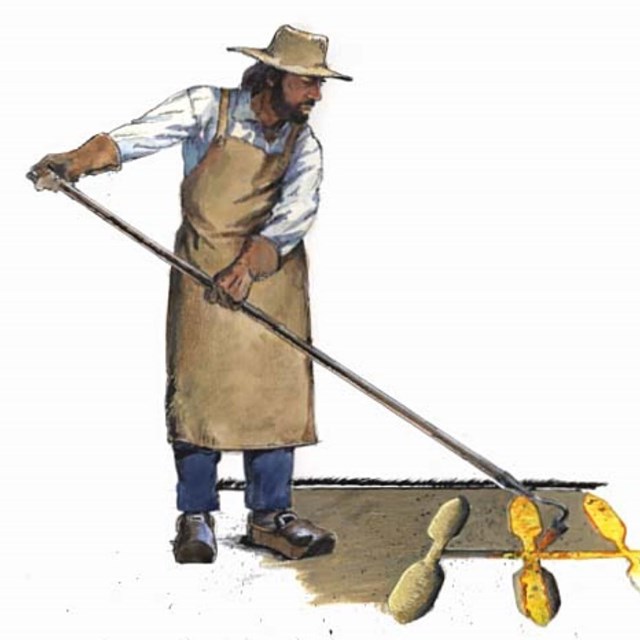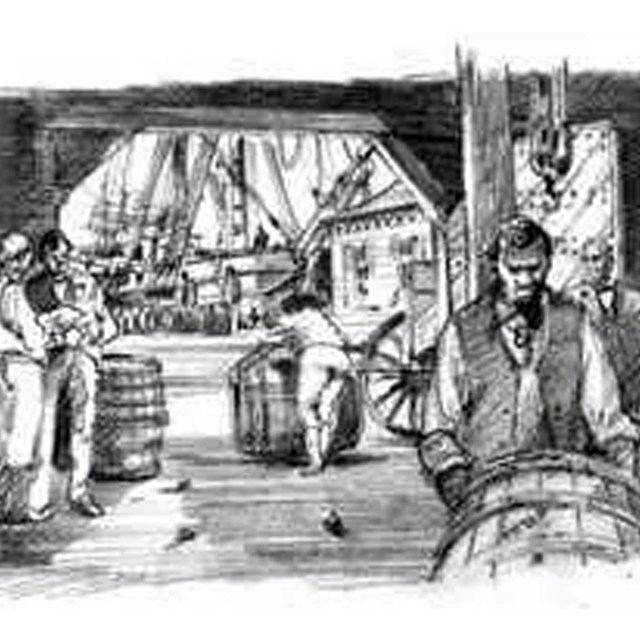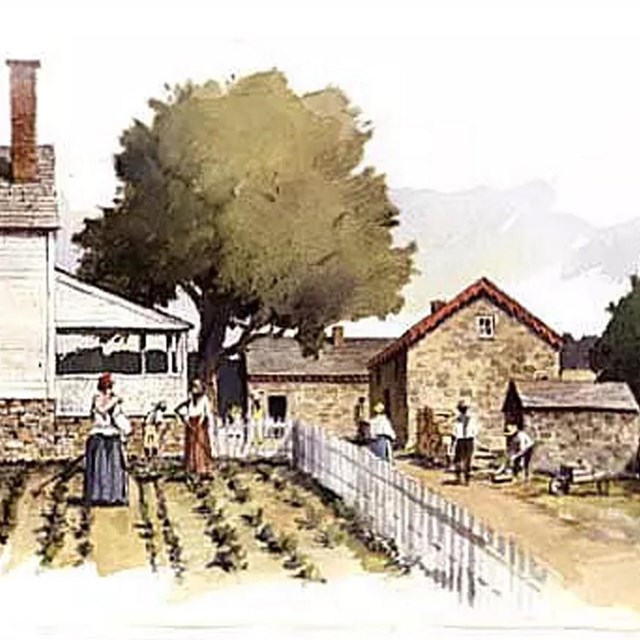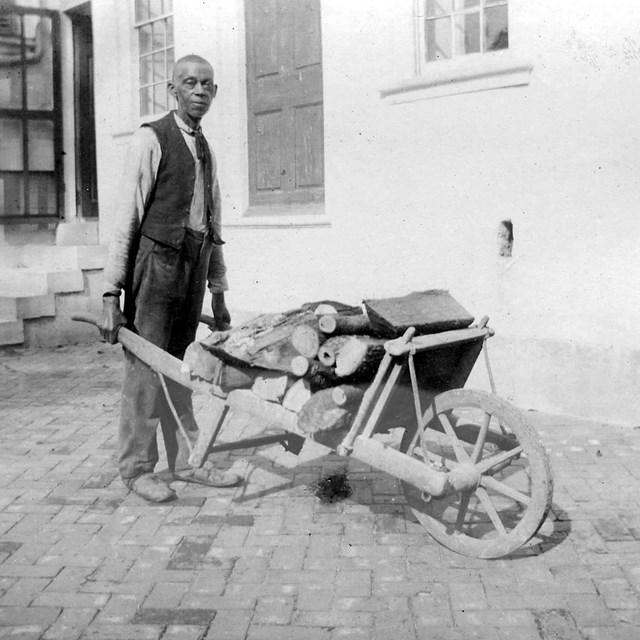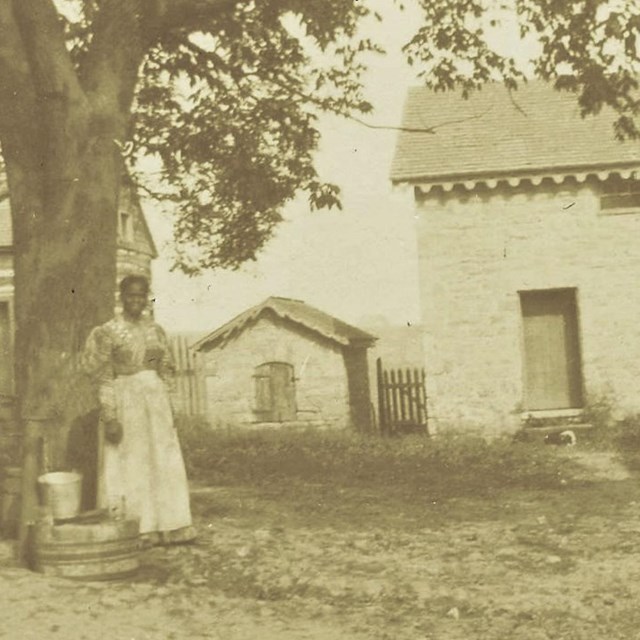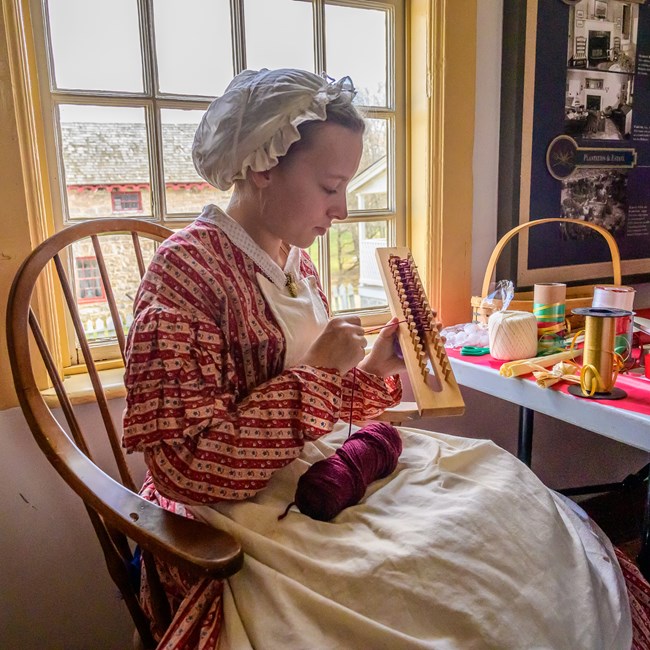
NPS/Tim Ervin The census of Hampton servants in the 1770’s contains an informal listing of clothing taken away from those workers, apparently when they arrived at the site. The idea seemed to have been to standardize attire for Hampton servants and the next document in that same collection is a listing of clothing and shoes given out to both white and black “servants.” The Ridgelys typically referred to enslaved persons as servants and in these early days the treatment of both groups was often similar in terms of assignment of tasks, food, lodgings, payment for “overtime” and punishments. 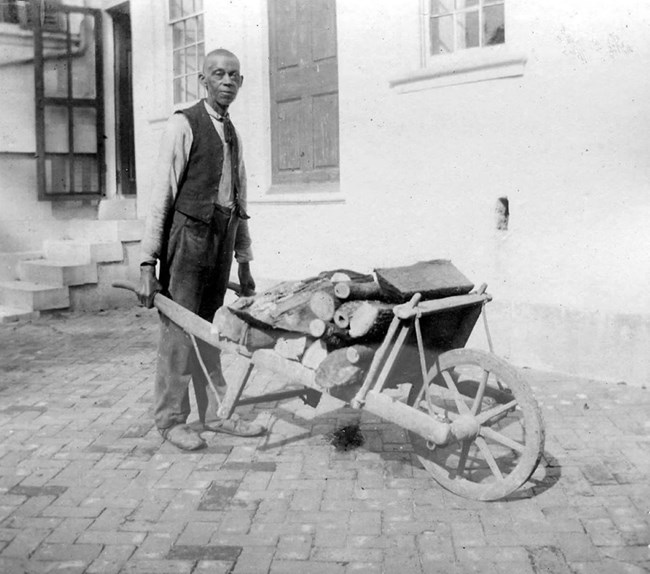
c. 1895, NPS Wives of servants, enslaved people and paid labors did much of the sewing work to make clothing at the Furnace, typically receiving some form of payment for the work. Two types of material appear again and again in the accounts, osnaburg and ticklenberg, which were heavy linen cloths used for such work clothes or for sacks and bags. Some fabric was woven from locally grown flax. 
Image courtesy Maryland Center for History and Culture According to a page listing “ farm servants” in May 1842, from Eliza E. Ridgely’s Servants Clothing Book, 1835-1854:
Much of this information is taken from “Almost Chattel” The Lives of Indentured Servants at Hampton-Northampton, Baltimore County,” by Dr. R. Kent Lancaster Learn More
|
Last updated: July 29, 2024

